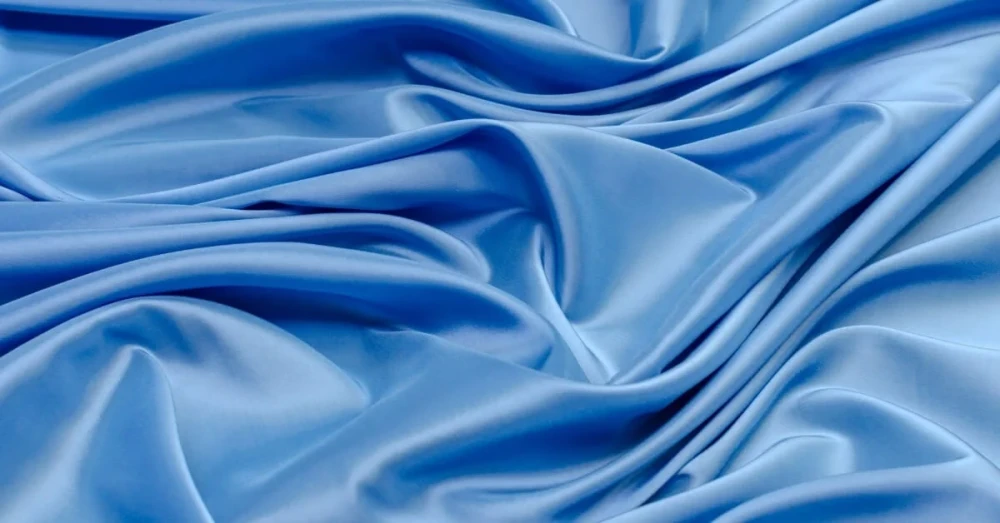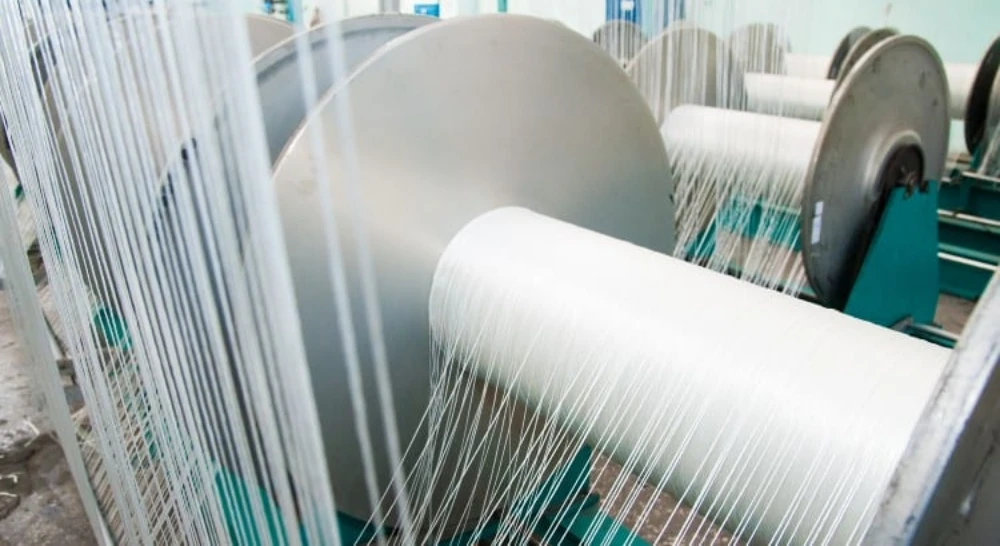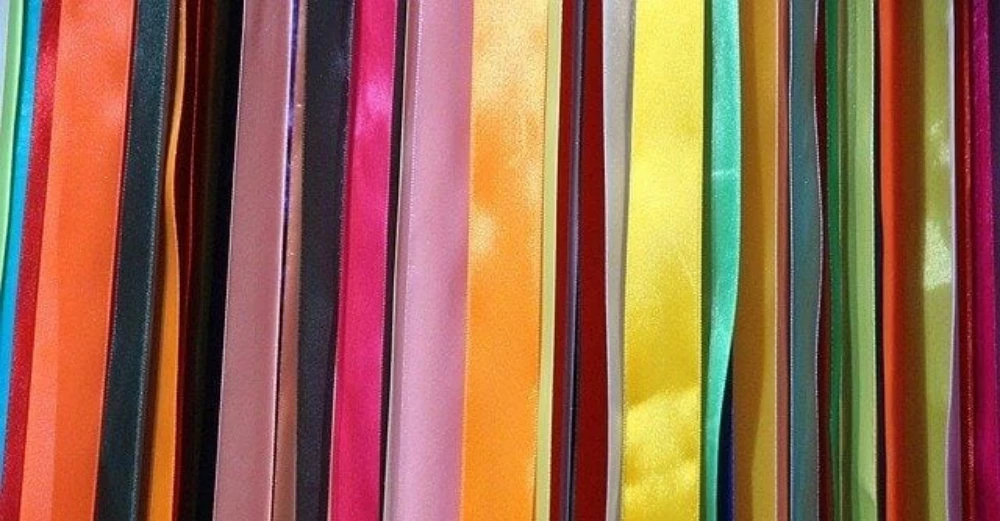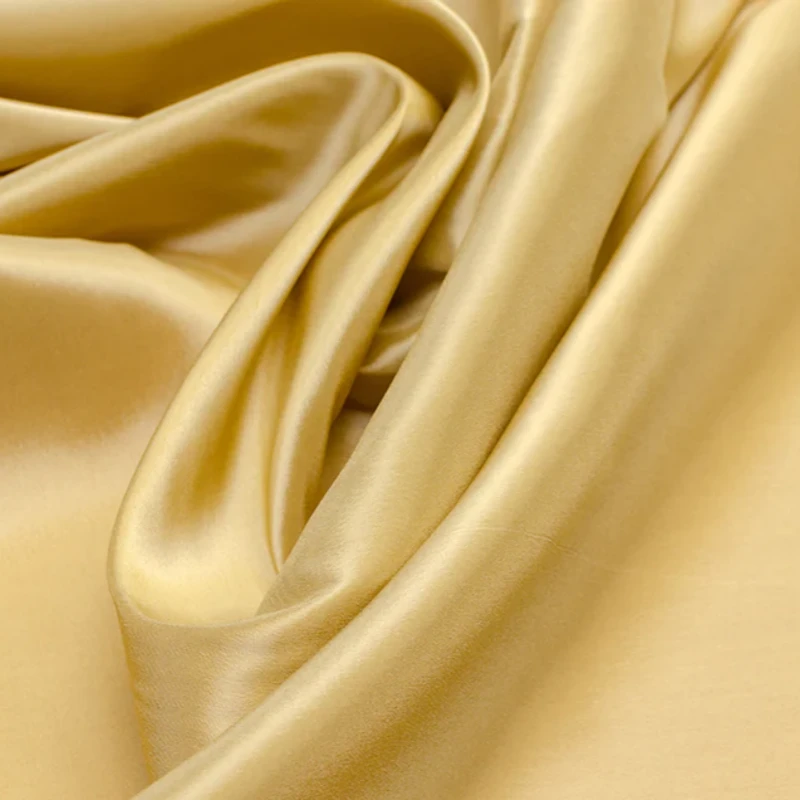You may wonder what acetate fabric is and whether it aligns with your brand’s vision. Acetate is derived from plant sources, but its production relies on chemicals that can harm both humans and the environment.
While acetate fabric feels luxurious and looks stunning, its sustainability falls short compared to other premium options. If you value innovation, quality, and eco-friendly practices, you should weigh these factors before choosing acetate.
Key Takeaways
Acetate fabric is a semi-synthetic material made from plant-based cellulose, offering a luxurious look and feel.
This fabric is popular for evening wear and linings due to its soft drape and shiny surface, making it a great choice for premium collections.
While acetate is beautiful, it requires careful handling and maintenance, as it can be sensitive to heat and certain chemicals.
Look for certifications like OEKO-TEX and GOTS to ensure the acetate fabric meets safety and sustainability standards.
Consider your brand’s values and customer expectations when choosing acetate, balancing its benefits with the need for durability and eco-friendliness.
What Is Acetate Fabric?
Acetate Fabric Definition
If you have ever wondered what acetate fabric is, you are not alone. This material often appears in high-end clothing and luxury linings. Acetate fabric comes from cellulose, which is a natural substance found in plants. Manufacturers usually get this cellulose from wood pulp.
They treat the wood pulp with acetic acid and other chemicals to create a smooth, shiny fiber. You might notice that acetate fabric feels soft and drapes beautifully, making it a favorite for elegant garments.
Here’s a quick look at what makes up acetate:
Made from wood pulp-based cellulose filaments.
Created by reacting wood pulp with acetic acid to form cellulose acetate.
Often blended with other fibers to boost strength.
Has a unique luster and high transparency, unlike petroleum-based fibers.
Less durable than some synthetic fibers like nylon or polyester.
You will often see acetate used in linings, evening wear, and even scarves because of its luxurious look and feel.
Acetate Fabric History

Acetate has a fascinating story in the world of textiles. Let’s take a look at some key moments that shaped its journey:
Year | Milestone Description |
|---|---|
1894 | Patent for cellulosic acetate production by Arthur D. Little. |
1924 | Commercial production of acetate fiber in the U.S. begins. |
1953 | The U.S. Federal Trade Commission classifies acetate separately from rayon. |
You can see that acetate fabric has been around for over a century. Its popularity grew as designers and manufacturers discovered its versatility and beauty.
Is It Natural or Synthetic?
You might ask, “Is acetate fabric natural or synthetic?” The answer sits somewhere in between. Acetate is a semi-synthetic material. It starts with cellulose from renewable sources like wood pulp or cotton linter.
However, the process involves significant chemical treatment. This means acetate fabric combines the best of both worlds: the origin is natural, but the transformation is chemical.
Note: The main sources of cellulose for acetate include wood pulp and sometimes other plant fibers like cotton, hemp, or jute. Manufacturers use special pulps, called dissolving pulps, to get the pure cellulose needed for production.
So, when you think about what acetate fabric is, remember that it is not fully natural or fully synthetic. It is a semi-synthetic fiber that brings a touch of nature and a bit of science together. This unique blend gives acetate its signature shine and softness, making it a popular choice for brands that want to offer something special.
Acetate Fabric Properties
Characteristics
When you touch acetate, you notice its silky texture right away. The fiber comes from wood pulp cellulose, which gives it a soft and smooth feel. Acetate fabric stands out because it resists dust, mildew, and insects. You can wash or dry-clean it, making maintenance easy.
The thermoplastic nature of acetate means it softens at high temperatures, so you can shape it permanently. You get bright colors because acetate dyes well with disperse dyes. The fiber has lower strength but stretches more than viscose, which helps garments drape nicely.
If you want a fabric that feels luxurious and looks elegant, acetate offers silk-like characteristics without the high price tag.
Appearance
Acetate fabric shines with a glossy surface that resembles mulberry silk. You see this shine in evening dresses and high-end fashion. The drape is soft and luxurious, which gives your garments a premium look. Take a look at how acetate compares to silk:
Feature | Acetate Fabric | Silk |
|---|---|---|
Finish | Shiny finish | Natural sheen |
Drape | Soft, luxurious | Smooth, elegant |
Cost | Lower | Higher |
Wrinkling | More prone | Less prone |
Usage | Evening dresses | Luxury garments |
Durability | Less durable | More durable |
You get a silk-like texture and opulent appearance, perfect for brands that want affordable luxury.
Stretch & Breathability
Acetate stretches more than many other fibers. You feel comfortable wearing it because it moves with your body. The moisture regain is higher than that of synthetic fibers, so you stay cool in summer. The breathability makes acetate a good choice for blouses, dresses, and linings.
Warmth
Acetate does not trap heat. You find it ideal for warm climates or layering. The fabric feels light and airy, which suits summer collections. You can pair acetate with other materials for added comfort.
Types
You see two main types in premium fashion: diacetate and triacetate. Diacetate fibers appear in high-end textiles, while triacetate offers extra durability. Designers use acetate fabric in evening gowns, linings, jackets, skirts, and women’s blouses. The elegant drape and shine make it a favorite for formal wear.
Friendtex focuses on innovative, premium fabrics. When you compare acetate to other options, you see how it brings luxury and versatility to your brand’s collection.
How Acetate Fabric Is Made?

Production Process
You might wonder how acetate fabric goes from plant to premium garment. The journey starts with cellulose, usually from wood pulp or cotton linters. Manufacturers use a semi-synthetic process that transforms this natural material into smooth, shiny fibers. Here’s a simple breakdown of how acetate comes to life:
Cellulose purification: Workers clean and bleach cotton linters or wood pulp to get pure cellulose.
Activation: The cellulose soaks in acetic acid, which prepares it for the next step.
Acetylation: The cellulose reacts with chemicals to form cellulose acetate.
Hydrolysis: This step makes the compound soluble in acetone.
Dope preparation: The acetate dissolves in a solvent to create a spinning solution.
Spinning: The solution gets pushed through spinnerets, forming long filaments.
Crimping and drying: The filaments are crimped, dried, and compressed into bales.
You see that the process combines natural sources with chemical treatment. Some brands, like Friendtex, focus on sourcing high-quality acetate from suppliers who use sustainable forestry and closed-loop systems.
These methods help reduce waste and protect the environment. When you choose acetate, you can look for options that support eco-friendly practices.
Tip: If you want to align your brand with sustainability, ask your manufacturer about their sourcing and production methods for acetate fabric.
Uses in Fashion
Acetate shines in the world of fashion. Designers love its silky texture and elegant drape. You find acetate in many premium garments and accessories. Here’s a quick look at how the industry uses acetate fabric:
Application Type | Description |
|---|---|
Lining fabrics | Used in jackets, suits, and haute couture for a smooth, comfortable feel. |
Eveningwear and bridal | Dresses and skirts benefit from acetate’s luster and graceful movement. |
Neckties and ribbons | The fiber’s dyeability creates vibrant colors for accessories. |
High-end dresses | Perfect for elegant gowns, cheongsams, and wedding dresses. |
Lining for coats | Adds comfort and quality to windbreakers and leather jackets. |
You notice that acetate offers a soft touch, excellent drape, and vibrant colors. These qualities make it a favorite for luxury brands and custom collections.
Friendtex uses acetate in select product lines to deliver premium comfort and style. If you want your brand to stand out, consider how acetate fabric can elevate your designs.
Acetate Fabric Pros and Cons
Advantages of Acetate Fabric

When you explore what acetate fabric is, you quickly notice its appeal for premium brands. Acetate fabric brings a touch of luxury to any collection. Here are some of the top benefits you can expect:
You get a fabric with a luxurious appearance that instantly elevates your designs.
The silk-like texture feels soft and smooth, adding refinement to every outfit.
Acetate fabric feels comfortable, even after hours of wear, which is perfect for all-day events or travel.
You can achieve vibrant, eye-catching colors because acetate dyes beautifully.
The fabric drapes well, creating elegant folds and a sophisticated look.
Acetate offers good breathability and moisture absorption, so it helps regulate body temperature. This makes it especially good for summer collections.
The soft luster gives your garments a high-end, elegant finish that customers love.
If you want practical benefits for garments, acetate delivers both style and comfort. Many designers choose it for its ability to mimic silk without the high cost. You also find that acetate is good for summer, thanks to its lightweight feel and breathability.
Acetate Fabric Disadvantages
While acetate has many benefits, you should also consider some challenges before adding it to your product line. Here’s a quick look at the most common drawbacks:
Disadvantage | Description |
|---|---|
Heat Sensitivity | Acetate fabric burns easily and can be damaged by high temperatures. |
Substance Sensitivity | Easily damaged by substances like perfume and nail polish remover. |
Prone to Wrinkles | Wrinkles easily, and those wrinkles are difficult to remove. |
Decreased Durability | Wears faster and does not last as long as other fabrics due to rubbing against other materials. |
Maintenance Required | Requires more care and must be dry-cleaned as it loses strength in water. |
You might notice that acetate needs more careful handling than some other fabrics. It does not hold up as well to heat or certain chemicals. You may need to recommend dry cleaning to your customers, especially for high-end pieces.
Is Acetate a Good Choice for Friendtex Brands?
You want your brand to stand out with quality, innovation, and sustainability. When you compare acetate to other premium fabrics like Tencel, Modal, or Organic Cotton, you see some clear differences. Tencel and Modal come from renewable wood sources and use eco-friendly processes.
Organic Cotton offers natural comfort and strong sustainability credentials. These fabrics align well with Friendtex’s commitment to sustainable fashion.
Acetate brings a unique set of benefits. Its luxurious look, silk-like feel, and vibrant colors make it a strong choice for premium and custom product lines. You can use acetate to create elegant eveningwear, linings, or summer pieces that need a light, breathable touch.
However, if your brand focuses on long-lasting durability and easy care, you might prefer Tencel or Organic Cotton.
Friendtex specializes in helping brands choose the right fabric for their vision. If you want to offer garments with a high-end finish and beautiful drape, acetate fabric can be a great addition to your collection.
You just need to balance the benefits of acetate with your brand’s values and your customers’ expectations. For brands that want to deliver both style and comfort, especially in summer, acetate offers a compelling option.
When you think about adding acetate to your premium collection, you probably want to know how it fits with your brand’s eco-friendly goals. Many high-end brands now look for sustainable fabric options and demand transparency in sourcing and production.
Acetate comes from plant-based cellulose, but the process uses chemicals. That’s why you should always check for certifications that show a commitment to safety and sustainability.
Here’s a quick look at some important certifications you can look for when you buy acetate fabric:
Certification Name | Description |
|---|---|
OEKO-TEX Standard 100 | Verifies the safety of textiles for human health by testing for harmful substances. |
Global Recycled Standard (GRS) | Confirms the use of recycled materials and assesses environmental and social impacts. |
Global Organic Textile Standard (GOTS) | Verifies the use of organic fibers and evaluates environmental and social impacts. |
Bluesign System | Evaluates environmental, social, and health impacts of textile production and promotes sustainable practices. |
Friendtex takes pride in holding many of these certifications. You can trust that your garments meet strict standards for both quality and sustainability. This approach helps you align your brand with the growing demand for ethical and eco-conscious fashion.
Now, let’s talk about how to care for acetate fabric in your collection. Proper care keeps your garments looking fresh and luxurious. Here are some easy tips:
Avoid excessive friction to prevent snagging.
Air your garments after wear to keep them fresh.
Use delicate refresher sprays made for fine fibers.
Dry cleaning works best for structured or delicate items.
If you hand-wash, use cold water and a mild detergent.
Never wring or twist the fabric.
Air dry flat, away from direct heat or sunlight.
Iron on low heat with a pressing cloth if needed.
For best results, always follow the washing instructions on the label. When drying and ironing, gentle handling protects the fabric’s shine and shape. With the right care, your acetate pieces will stay beautiful and comfortable for a long time.
Conclusion
You’ve learned how acetate stands out for its silky feel, elegant drape, and quick-drying nature. Take a look at these key points:
Key Properties of Acetate Fibers | Applications Include |
|---|---|
High luster and aesthetic appeal | Evening wear and luxury apparel |
Excellent drape and softness | Drapes and curtains |
Biodegradable under proper conditions | Specialty packaging materials |
If you want to choose the best fabric for your brand, think about your values, your customers, and your sustainability goals. You can find resources that offer rules of thumb, discuss chemicals, and explain certifications. Reach out to Friendtex for expert advice on selecting acetate or other premium materials.
FAQ
What makes acetate fabric different from other premium fabrics?
Acetate stands out for its silky feel and shiny look. You get a fabric that drapes beautifully and feels light. It offers a more affordable alternative to silk, but it needs gentle care.
Can you wash acetate fabric at home?
You can hand-wash acetate in cold water with mild detergent. Never wring or twist it. For best results, dry cleaning works well, especially for structured or delicate pieces.
Is acetate fabric eco-friendly?
Acetate comes from plant-based cellulose, but the process uses chemicals. Look for certifications like OEKO-TEX or GOTS to make sure your acetate meets higher environmental standards.
What types of garments work best with acetate?
You can use acetate for evening dresses, linings, blouses, and scarves. Its soft drape and shine make it perfect for formal wear and luxury collections.
How do you keep acetate garments looking new?
Tip: Always air dry acetate flat and avoid direct heat. Use a pressing cloth when ironing on low. Store your garments away from sunlight to protect their color and shine.


